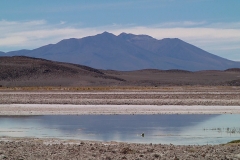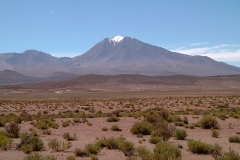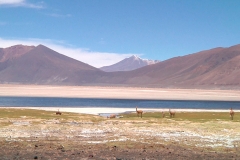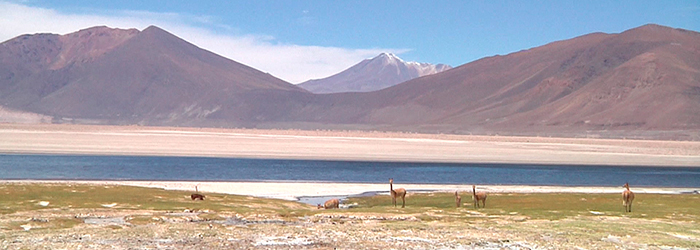Location and Environment
The Quechua are an indigenous people whose name refers to the language they speak— Quechua. The first Quechua communities to emerge were located in what is now Antofagasta Region in Northern Chile, specifically in Ollagüe and along the San Pedro River (a tributary of the Upper Loa River). Recently, some families and individuals living in the oases and ravines of Tarapacá Region—including Mamiña, Quipisca and Miñe Miñe—have identified themselves as Quechua because their families have a long history of occupation in traditional Quechua areas, though they no longer speak the language.
Ollagüe, Alto Loa and the Tarapacá oases and ravines have distinct environments. Ollagüe is an Altiplano zone with salt flats such as Carcote and Ascotán situated at around 3600 m above sea level. Between 3600 and 3850 m, the flora is herbaceous and bushy, a vegetation community known as tolar, while higher up it consists of grasses and llareta and is known as pajonal. There is no vegetation above 4200 m. The climate is high altitude desert, with annual high and low temperatures of 25ºC and -23º C, respectively. Summer is the rainy season, with volcanoes such as Alconcha, Ollagüe and Aucanquilcha receiving the most rainfall and snowfall, owing to their altitude. Those rains favor the formation of freshwater springs and pools that are used by the local inhabitants to water their crops and their animals, and they provide essential water for high altitude pasturelands as well. In ancient times, the Quechuas living near the San Pedro River inhabited Ojos de San Pedro settlement and used the entire basin for their herding activities. The upper basin has a climate and vegetation similar to those found in Ollagüe, although more precipitation falls on the slopes of nearby volcanoes, including San Pedro and San Pablo, Paniri, Inacaliri and Línzor. The waters that run down the slopes of this abrupt landscape join to form the Inacaliri and Cabana rivers, which are further fed by the waters of the Silala River, originating in Bolivia. All of these watercourses empty out into Laguna Ojos de San Pedro, which gives rise to the river of the same name. today, however, these rivers have been diverted into pipelines and Laguna San Pedro has been drained for use in mining, sanitation and railway activities. This serious ecological alteration has forced most local Quechua families, like those from Ollagüe, to move to the city of Calama.
The Quechua communities of Tarapacá, for their part, inhabit oases found at the base of the zone’s mountains and ravines. The climate there is desertic, but groundwater is available. Microclimates with moderate to high temperatures form in these zones, protecting the area from frost and making it suitable for agricultural crops, especially fruit.






